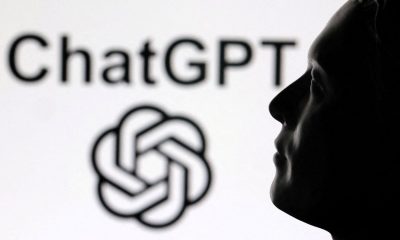
Technology
Fears about AI’s existential risk are overdone, says a group of experts – Crypto News
Superintelligence is not required for AI to cause harm. That is already happening. AI is used to violate privacy, create and spread disinformation, compromise cyber-security and build biased decision-making systems. The prospect of military misuse of AI is imminent. Today’s AI systems help repressive regimes to carry out mass surveillance and to exert powerful forms of social control. Containing or reducing these contemporary harms is not only of immediate value, but is also the best bet for easing potential, albeit hypothetical. To install future x-risk.
It is safe to say that the AI that exists today is not superintelligent. But it is possible that AI will be made superintelligent in the future. Researchers are divided on how soon that may happen, or even if it will. Still, today’s AI models are impressive, and arguably possess a form of intelligence and understanding of the world; otherwise they would not be so useful. Yet they are also easily fooled, liable to generate falsehoods and sometimes fail to reason correctly. As a result, many contemporary harms stem from AI’s limitations, rather than its capabilities.
It is far from obvious whether AI, superintelligent or not, is best thought of as an alien entity with its own agency or as part of the anthropogenic world, like any other technology that both shapes and is shaped by humans. But for the sake of argument, let us assume that at some point in the future a superintelligent AI emerges which interacts with humanity under its own agency, as an intelligent non-biological organism. Some x-risk-boosters suggest that such an AI would cause human extinction by natural selection, outcompeting humanity with its superior intelligence.
Intelligence certainly plays a role in natural selection. But extinctions are not the outcomes of struggles for dominance between “higher” and “lower” organisms. Rather, life is an interconnected web, with no top or bottom (consider the virtual indestructibility of the cockroach). Symbiosis and mutualism—mutually beneficial interactions between different species—are common, particularly when one species depends on another for resources. And in this case, AIs depend utterly on humans. From energy and raw materials to computer chips, manufacturing, logistics and network infrastructure, we are as fundamental to AIs’ existence as oxygen-producing plants are to ours.
Perhaps computers could eventually learn to provide for themselves, cutting humans out of their ecology? This would be tantamount to a fully automated economy, which is probably neither a desirable nor an inevitable outcome, with or without superintelligent AI. Full automation is incompatible with current economic systems and, more importantly, may be incompatible with human flourishing under any economic regime—recall the dystopia of Pixar’s “Wall-E”.
Luckily, the path to automating away all human labor is long. Each step offers a bottleneck (from the AI’s perspective) at which humans can intervene. In contrast, the information-processing labor which AI can perform at next to no cost poses both great opportunity and an urgent socioeconomic challenge.
Some may still argue that AI x-risk, even if improbable, is so dire that prioritizing its mitigation is paramount. This echoes Pascal’s wager, the 17th-century philosophical argument which held that it was rational to believe in God, just in case he was real, so as to avoid any possibility of the terrible fate of being condemned to hell. Pascal’s wager, both in its original and AI versions, is designed to end reasoned debate by assigning infinite costs to uncertain outcomes.
In a utilitarian analysis, in which costs are multiplied by probabilities, infinity times any probability other than zero is still infinity. Hence accepting the AI x-risk version of Pascal’s wager might lead us to conclude that AI research should be stopped altogether or tightly controlled by governments. This could curtail the nascent field of beneficial AI, or create cartels with a stranglehold on AI innovation. For example, if governments passed laws limiting the legal right to deploy large generative language models like ChatGPT and Bard to only a few companies, those companies could amass unprecedented (and undemocratic) power to shape social norms, and the ability to extract rent on digital tools that are likely to be critical to the 21st-century economy.
Perhaps regulations could be designed so as to reduce the potential for x-risk while also attending to more immediate AI harms? Probably not; Proposals to curb AI x-risk are often in tension with those directed at existing AI harms. For instance, regulations to limit the open-source release of AI models or datasets make sense if the goal is to prevent the emergence of an autonomous networked AI beyond human control. However, such restrictions may handicap other regulatory processes, for instance those for promoting transparency in AI systems or preventing monopolies. In contrast, regulation which takes aim at concrete, short-term risks—such as requiring AI systems to honestly disclose information about themselves—will also help to mitigate longer-term, and even existential, risks.
Regulators should not prioritize the existential risk posed by superintelligent AI. Instead, they should address the problems which are in front of them, making models safer and their operations more predictable in line with human needs and norms. Regulations should focus on preventing inappropriate deployment of AI. And political leaders should reimagine a political economy that promotes transparency, competition, fairness and the flourishing of humanity through the use of AI. That would go a long way to curbing today’s AI risks, and be a step in the right direction in mitigating more existential, albeit hypothetical, risks.
Blaise Agüera y Arcas is a Fellow at Google Research, where he leads a team working on artificial intelligence. This piece was co-written with Blake Richards, an associate professor at McGill University and a CIFAR AI Chair at Mila – Quebec AI Institute; Dhanya Sridhar, an assistant professor at the Université de Montréal and a CIFAR AI Chair at Mila – Quebec AI Institute; and Guillaume Lajoie, an associate professor at the Université de Montréal and a CIFAR AI Chair at Mila – Quebec AI Institute.
©️ 2023, The Economist Newspaper Limited. All rights reserved.
From The Economist, published under license. The original content can be found on www.economist.com
-
others1 week ago
Will Ethereum Price Rally to $3,200 as Wall Street Pivots from BTC to ETH – Crypto News
-
![DIS Elliott Wave technical analysis [Video]](https://dripp.zone/news/wp-content/uploads/2025/06/DIS-Elliott-Wave-technical-analysis-Video-Crypto-News-400x240.jpg)
![DIS Elliott Wave technical analysis [Video]](https://dripp.zone/news/wp-content/uploads/2025/06/DIS-Elliott-Wave-technical-analysis-Video-Crypto-News-80x80.jpg) others6 days ago
others6 days agoSkies are clearing for Delta as stock soars 13% on earnings beat – Crypto News
-
![DIS Elliott Wave technical analysis [Video]](https://dripp.zone/news/wp-content/uploads/2025/06/DIS-Elliott-Wave-technical-analysis-Video-Crypto-News-400x240.jpg)
![DIS Elliott Wave technical analysis [Video]](https://dripp.zone/news/wp-content/uploads/2025/06/DIS-Elliott-Wave-technical-analysis-Video-Crypto-News-80x80.jpg) others6 days ago
others6 days agoSkies are clearing for Delta as stock soars 13% on earnings beat – Crypto News
-
Cryptocurrency1 week ago
TON Foundation Confirms UAE Golden Visa Offer Is Not Official – Crypto News
-

 Blockchain1 week ago
Blockchain1 week agoInsomnia Labs Debuts Stablecoin Credit Platform for Creators – Crypto News
-

 Cryptocurrency1 week ago
Cryptocurrency1 week agoCoinbase hacker returns with $12.5 mln ETH buy: Will security concerns affect Ethereum? – Crypto News
-

 others1 week ago
others1 week agoAppropriate to have cautious gradual stance on easing – Crypto News
-

 Cryptocurrency1 week ago
Cryptocurrency1 week agoTornado Cash Judge Won’t Let One Case Be Mentioned in Roman Storm’s Trial: Here’s Why – Crypto News
-
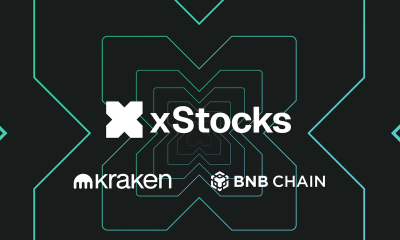
 Blockchain1 week ago
Blockchain1 week agoKraken and Backed Expand Tokenized Equities to BNB Chain – Crypto News
-
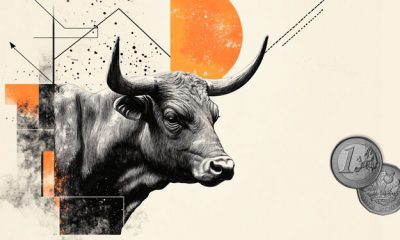
 others7 days ago
others7 days agoEUR/GBP posts modest gain above 0.8600 ahead of German inflation data – Crypto News
-

 Blockchain7 days ago
Blockchain7 days agoAnt Group Eyes USDC Integration Circle’s: Report – Crypto News
-
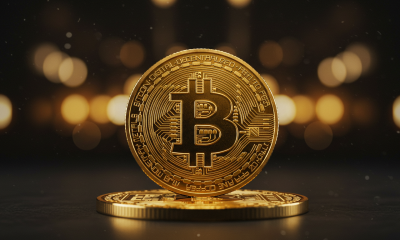
 Cryptocurrency6 days ago
Cryptocurrency6 days agoBitcoin Breaks New Record at $111K, What’s Fueling the $120K Price Target? – Crypto News
-
Technology6 days ago
XRP Eyes $3 Breakout Amid Rising BlackRock ETF Speculation – Crypto News
-
Business1 week ago
Toncoin Price Drops 10% As UAE Authorities Call TON Golden Visa Offer Unofficial – Crypto News
-

 Blockchain1 week ago
Blockchain1 week agoXRP Set To Shock The Crypto Market With 30% Share: Analyst – Crypto News
-
others1 week ago
Is a Pi Network Crash Ahead As 272M Coins Unlock in July – Crypto News
-
Business1 week ago
Solana ETF Launch Delayed Amid Wait for SEC’s Crypto ETF Framework – Crypto News
-

 others1 week ago
others1 week agoUSD/CHF gains ground below 0.8000 ahead of US tariff deadline – Crypto News
-

 Blockchain1 week ago
Blockchain1 week agoEU Questions Robinhood About OpenAI and SpaceX Stock Tokens – Crypto News
-

 Cryptocurrency1 week ago
Cryptocurrency1 week agoOn thinking ahead when markets get murky – Crypto News
-
Technology1 week ago
Solana Meme Coin PNUT Rallies 10% Amid Elon Musk’s Statement – Crypto News
-
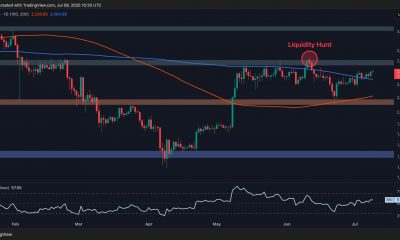
 Cryptocurrency1 week ago
Cryptocurrency1 week agoIs ETH Finally Ready to Shoot For $3K? (Ethereum Price Analysis) – Crypto News
-

 Blockchain1 week ago
Blockchain1 week agoXRP Rally Possible If Senate Web3 Crypto Summit Goes Well – Crypto News
-

 others1 week ago
others1 week agoUSD/CAD trades with positive bias below 1.3700; looks to FOMC minutes for fresh impetus – Crypto News
-

 Blockchain1 week ago
Blockchain1 week agoEthereum Bulls Roar — $3K Beckons After 5% Spike – Crypto News
-
Technology1 week ago
VC Firm Ego Death Capital Closes $100M Funding to Back Bitcoin-Based Projects – Crypto News
-

 others1 week ago
others1 week agoNovaEx Launches with a Security-First Crypto Trading Platform Offering Deep Liquidity and Institutional-Grade Infrastructure – Crypto News
-
Business7 days ago
Did Ripple Really Win XRP Lawsuit Despite $125M Fine? Lawyer Fires Back at CEO – Crypto News
-

 Cryptocurrency7 days ago
Cryptocurrency7 days agoXRP price forecast as coins surges 2.19% to $2.33 – Crypto News
-

 others6 days ago
others6 days agoAnthony Scaramucci Says $180,000 Bitcoin Price Explosion Possible As BTC ‘Supremacy’ Creeps Up – Here’s His Timeline – Crypto News
-

 Blockchain6 days ago
Blockchain6 days agoSUI Chart Pattern Confirmation Sets $3.89 Price Target – Crypto News
-

 others5 days ago
others5 days agoEUR/GBP climbs as weak UK data fuels BoE rate cut speculation – Crypto News
-

 Blockchain5 days ago
Blockchain5 days agoBitcoin Hits All-Time High as Crypto Legislation Votes Near – Crypto News
-
Business5 days ago
PENGU Rallies Over 20% Amid Coinbase’s Pudgy Penguins PFP Frenzy – Crypto News
-

 Cryptocurrency1 week ago
Cryptocurrency1 week agoMacroeconomics, Market Shifts, and Trading Speed Take Center Stage at B2MEET by B2PRIME – Crypto News
-

 Blockchain1 week ago
Blockchain1 week agoUAE Golden Visa Is ‘Being Developed Independently‘ — TON Foundation – Crypto News
-
others1 week ago
Nasdaq-Listed Bit Digital Converts Entire Bitcoin Holdings To Ethereum Treasury – Crypto News
-

 others1 week ago
others1 week agoEthereum Continues Outperforming Institutional Capital Flows As Investors Pour $1,040,000,000 Into Crypto Products: CoinShares – Crypto News
-

 Cryptocurrency1 week ago
Cryptocurrency1 week agoElon Musk announces his ‘America Party’ will embrace Bitcoin, criticizes Trump’s fiscal bill – Crypto News
-

 Technology1 week ago
Technology1 week agoHuaweis AI lab denies that one of its Pangu models copied Alibabas Qwen – Crypto News
-

 Cryptocurrency1 week ago
Cryptocurrency1 week agoXRP could rally higher on steady capital inflow; check forecast – Crypto News
-
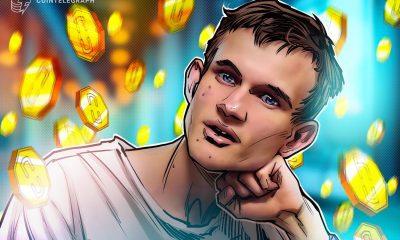
 Blockchain1 week ago
Blockchain1 week agoVitalik Buterin Backs Copyleft Licensing for Fairer Crypto – Crypto News
-

 Cryptocurrency1 week ago
Cryptocurrency1 week agoBulls In Control But Resistance Persists at $2.30. What Next? – Crypto News
-
Technology1 week ago
GameSquare Stock Shoots 58% After Revealing $100 Million Ethereum Treasury Strategy – Crypto News
-

 others1 week ago
others1 week agoAustralian Dollar remains stronger due to persistent inflation risks, FOMC Minutes eyed – Crypto News
-

 others1 week ago
others1 week agoUS Dollar Resurgence May Be Around the Corner, According to Barclays Currency Strategist – Here’s Why: Report – Crypto News
-
others1 week ago
Trump Jr. Backed Thumzup Media To Invest In ETH, XRP, SOL, DOGE And LTC – Crypto News
-

 Cryptocurrency1 week ago
Cryptocurrency1 week agoBitcoin Hits Record Peak. How High Can It Surge in 2025? – Crypto News
-

 Blockchain1 week ago
Blockchain1 week agoBinance Founder Backs BNB Treasury Company Aiming For US IPO – Crypto News
-
Cryptocurrency1 week ago
Tokenized Securities Are Still Securities, US SEC Warns Robinhood, Kraken – Crypto News





